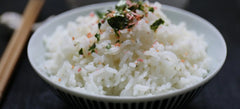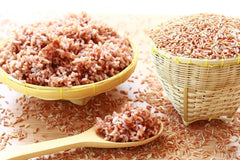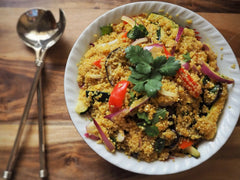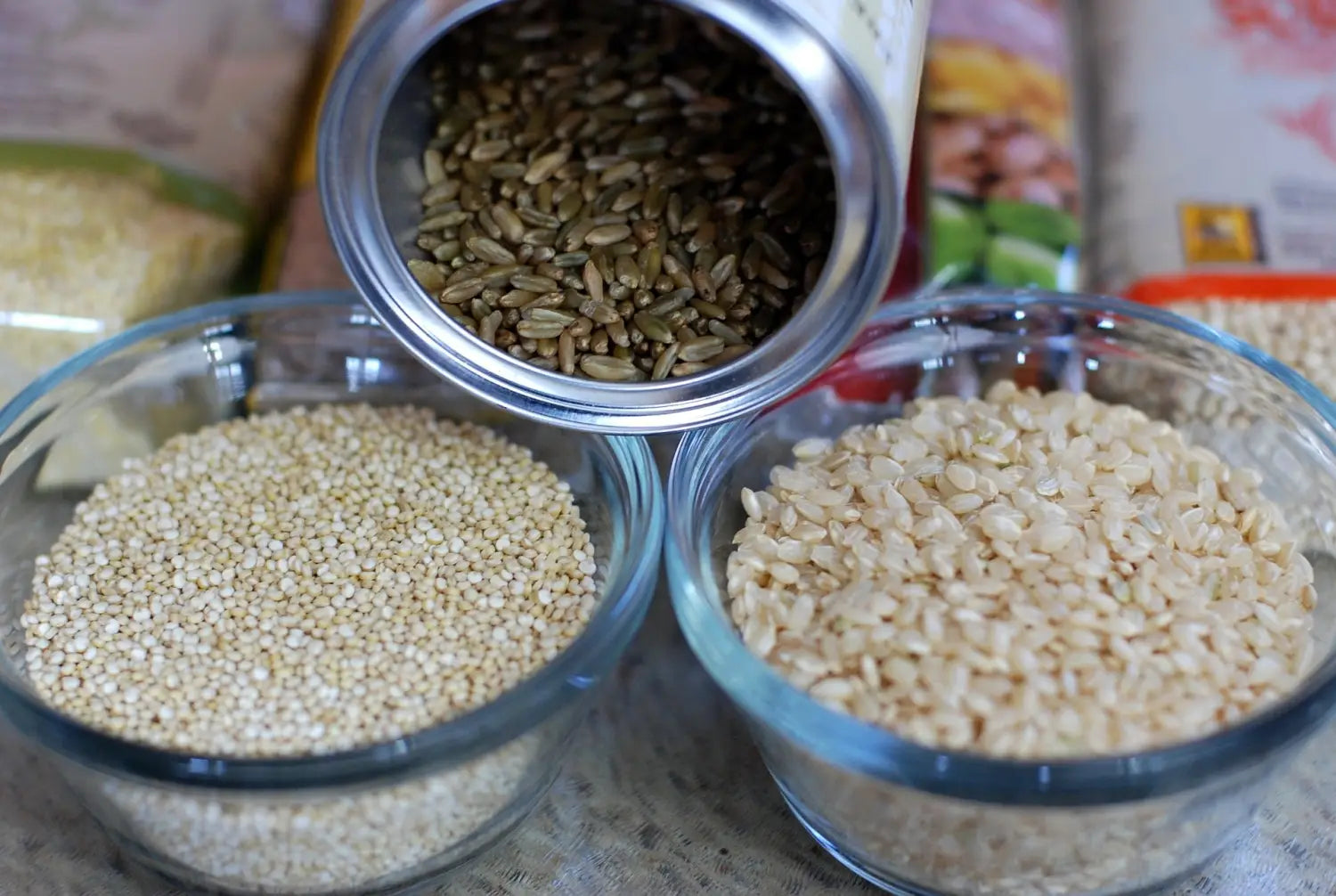Feb 6, 2021
Rice Versus Quinoa
Rice Versus Quinoa
A Low-Carb, Protein-Rich Alternative to Our Favorite Side Dish

Having spent most of my life living in Japan and Hawaii, rice has always been a big part of my diet. Like most of my friends and family, I love rice! It’s the ultimate comfort food—a perfect complement to other dishes, and heavy in delicious carbohydrates. But that also makes it sort of unhealthy, because it’s easy to eat a lot of it, and excessive, unused carbohydrates typically end up turning into fat.
For that reason, I’ve lately been exploring using brown rice instead of white rice. Brown rice contains the husk, germ, and bran of the rice grains, which include lots of fiber and nutrients, whereas white rice is basically just empty, starchy calories. This is similar to white bread or other white flour products (such as pancakes) versus whole-wheat breads and pancakes, which contain a lot more fiber and nutrients as well.
Brown rice has a different flavor than white rice—sort of nuttier, earthier, and

more wholesome—and takes some getting used to. But once you become accustomed to it, it’s actually quite delicious! Of course, there are certain dishes that simply go better with white rice—things like sushi and poke, for instance. But generally speaking, brown rice is a healthy, delicious substitute for white rice that has a lower glycemic index and helps regulate blood sugar.
Another alternative to rice that is arguably even healthier is quinoa. This seed from Peru can be used as a grain, and is quite popular in health food stores and healthy restaurants. The reason it’s so popular is that it has far fewer calories and carbohydrates per serving than rice, and way more protein.

A cup of white rice actually has 40 more calories and more carbohydrates than a cup of quinoa, while that same cup of quinoa contains twice as much protein and five more grams of fiber than the rice. This makes quinoa much better in terms of calories consumed, glycemic index, muscle repair, and digestive health. The protein and fiber also help fill you up faster, so you will likely end up eating less food during your meal, which helps to regulate your weight. Finally, quinoa contains a complete protein, which means it has all nine essential amino acids. This makes it a great protein source for vegetarians and those looking to cut down on their intake of animal products.
Of course, for those who haven’t eaten quinoa their whole lives, it does take some getting used to. Like brown rice, it has an earthier, nuttier flavor, and the seeds are a bit smaller and less sticky than white rice grains.
But those who have grown to love it swear that quinoa is far superior to rice, both nutritionally and in terms of flavor. Next time you are at the grocery store, grab a bag of quinoa, throw it in the rice cooker same as you would with rice, and cook it up. Who knows—you just find that you like it better than rice!

